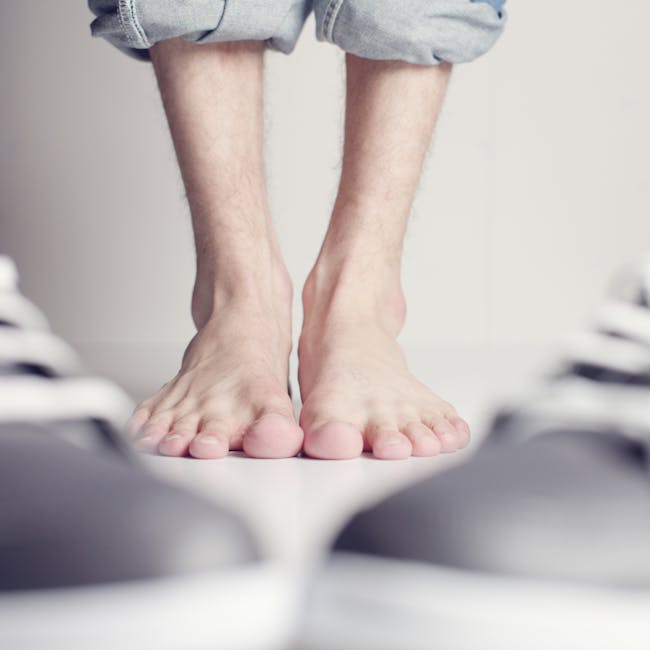 Foot Pain: What It Is, Why It Happens, and How to Fix It
Foot Pain: What It Is, Why It Happens, and How to Fix It
Many people experience foot pain at some point in their lives, regardless of how old they are, what they do, or who they are. Different factors can cause foot pain, and it can impact various regions of the foot, like the toes, heel, arch, or sole. The pain can be anywhere from slight to severe, and it may come and go or persist. In this article, we will look at some of the usual types of foot pain, what causes them, and how to deal with them. Click here to get even more info on the subject! View here for more info on this product.
Categories of Foot Pain
Different parts of the foot can be affected by different types of foot pain. Some of the most typical categories are:
Heel pain: This is when you have pain at the bottom or back of your heel. It can result from various issues such as plantar fasciitis (irritation of the tissue that connects the toes and the heel bone), heel spurs (bony projections on the heel bone), Achilles tendinitis (irritation of the tendon that attaches the heel bone and the calf muscles), or bursitis (irritation of the fluid-filled sacs that cushion the joints). Arthritis foot pain: This is when you feel pain because of swelling and deterioration of the joints in your foot. There are different kinds of arthritis that can impact your foot, such as osteoarthritis (arthritis from wear-and-tear), rheumatoid arthritis (arthritis from your immune system attacking your joints), psoriatic arthritis (arthritis related to psoriasis), or gout (arthritis from uric acid crystals).
Gout foot pain: This is a specific type of arthritis foot pain that occurs when uric acid crystals build up in the joints, especially the big toe. Uric acid is a waste product that is normally excreted by the kidneys, but sometimes it accumulates in the blood and forms crystals. Gout can cause sudden and severe attacks of pain, swelling, redness, and warmth in the affected joint. Gout can be acute (short-term) or chronic (long-term). Click here to learn more about this service! This homepage has all the info.
Sources of Foot Pain
There are different reasons for foot pain, depending on the kind of pain and the area of the foot that is involved. Click here for more helpful tips on these companies.
Some of the common causes are:
Wearing shoes that are not suitable or are too tight, too loose, too high, or too flat. This can cause strain, friction, or harm to the foot. Having an injury to the foot, such as a sprain, fracture, or puncture wound. This can cause pain, swelling, bruising, or infection in the foot. Having a medical issue that affects the nerves, blood vessels, bones, joints, or muscles of the foot, such as diabetes, peripheral artery disease (PAD), nerve problems, bone thinning, or cancer. This can cause pain, numbness, tingling sensations, coldness, weakness, or distortion in the foot. Treatments for Foot Pain There are different ways to treat foot pain, depending on what causes it and how bad it is. Some of the usual solutions are: Physiotherapy: This is a form of therapy that involves exercises, stretches, massages, or other techniques to improve the mobility and range of motion of the foot. Physiotherapy can help with various categories of foot pain, such as heel pain, arthritis foot pain, or gout foot pain. Physiotherapy can also help prevent or reduce the risk of future foot problems. Medication: This is a type of treatment that involves taking drugs to relieve the pain, inflammation, or infection in the foot. Medication can be taken orally (by mouth), topically (on the skin), or injected (into the joint). Medication can help with various types of foot pain, such as heel pain, arthritis foot pain, or gout foot pain. However, medication may have side effects or interactions with other drugs. For more info on this product view here! Click here to get even moreinfo. Surgery: This is a form of treatment that involves operating on the foot to mend or remove damaged tissue, bone, or joint. Surgery can help with various categories of foot pain that do not get better with other treatments, such as heel spurs, ingrown toenails, bunions (bony lumps on the side of the big toe), hammertoes (toes that curl downward), or neuromas (nerve tumors). However, surgery may have risks or complications such as bleeding, infection, scarring, or nerve damage. See, this website has all the info you need to learn about this amazing product. Just click here and check it out! Attributed by: like it